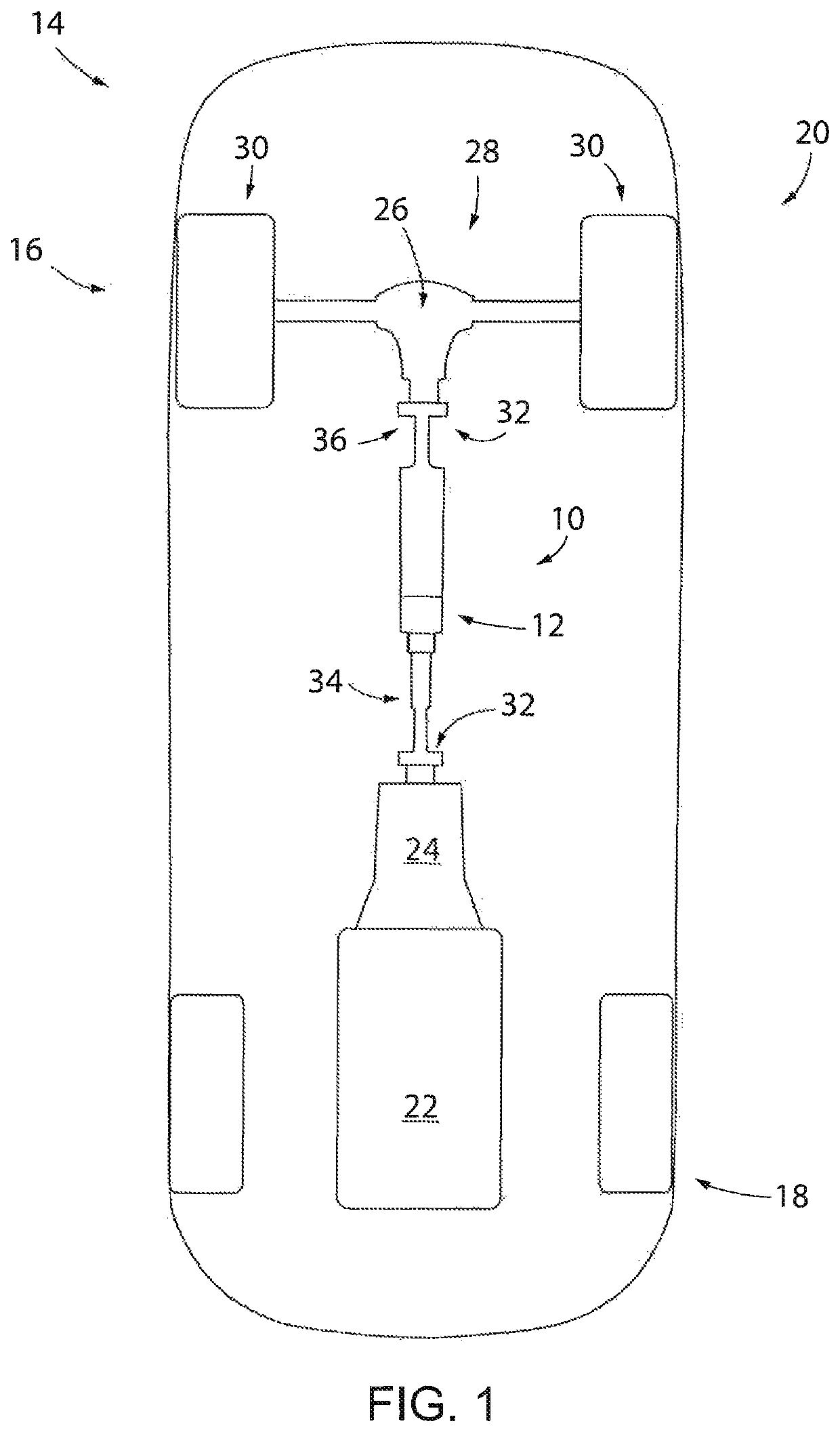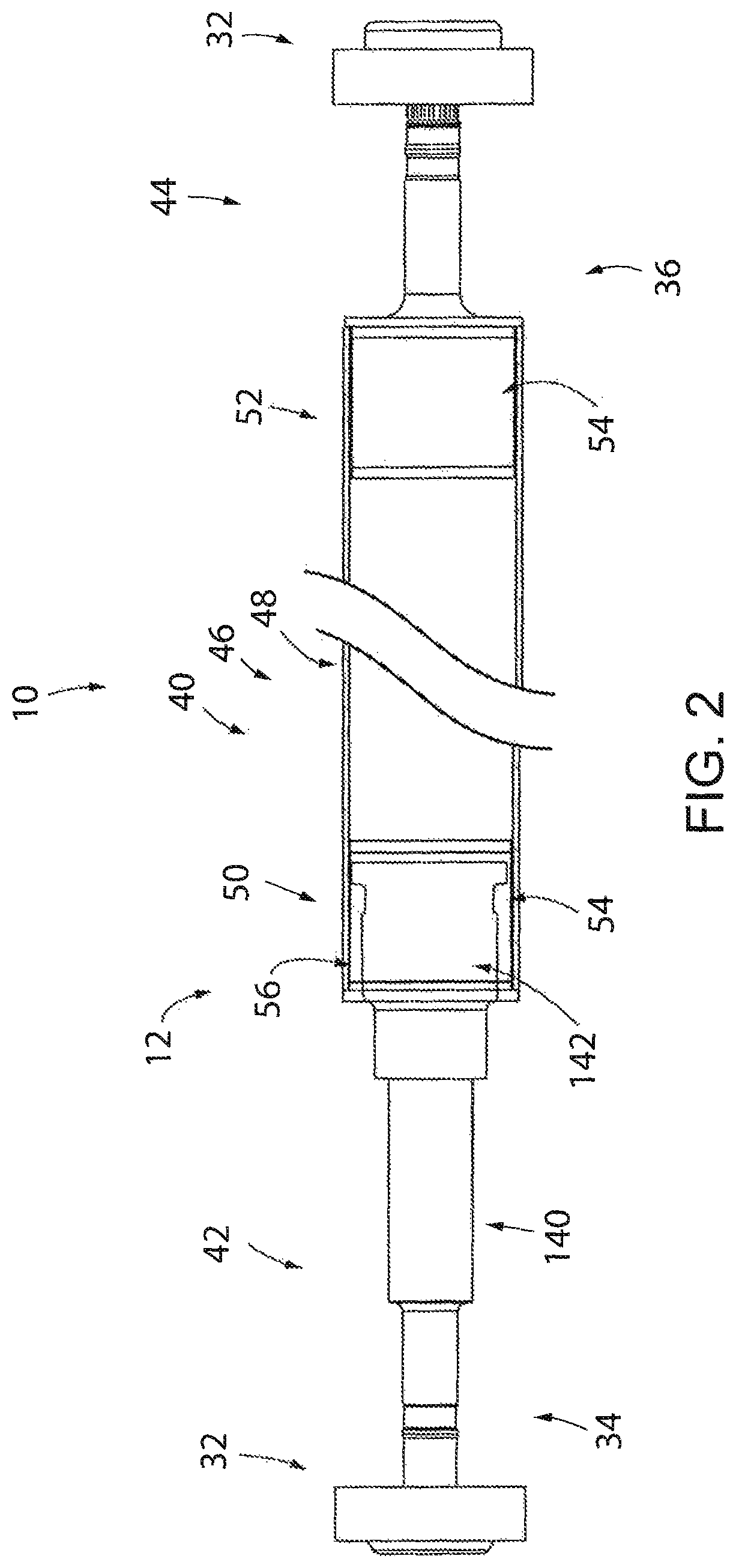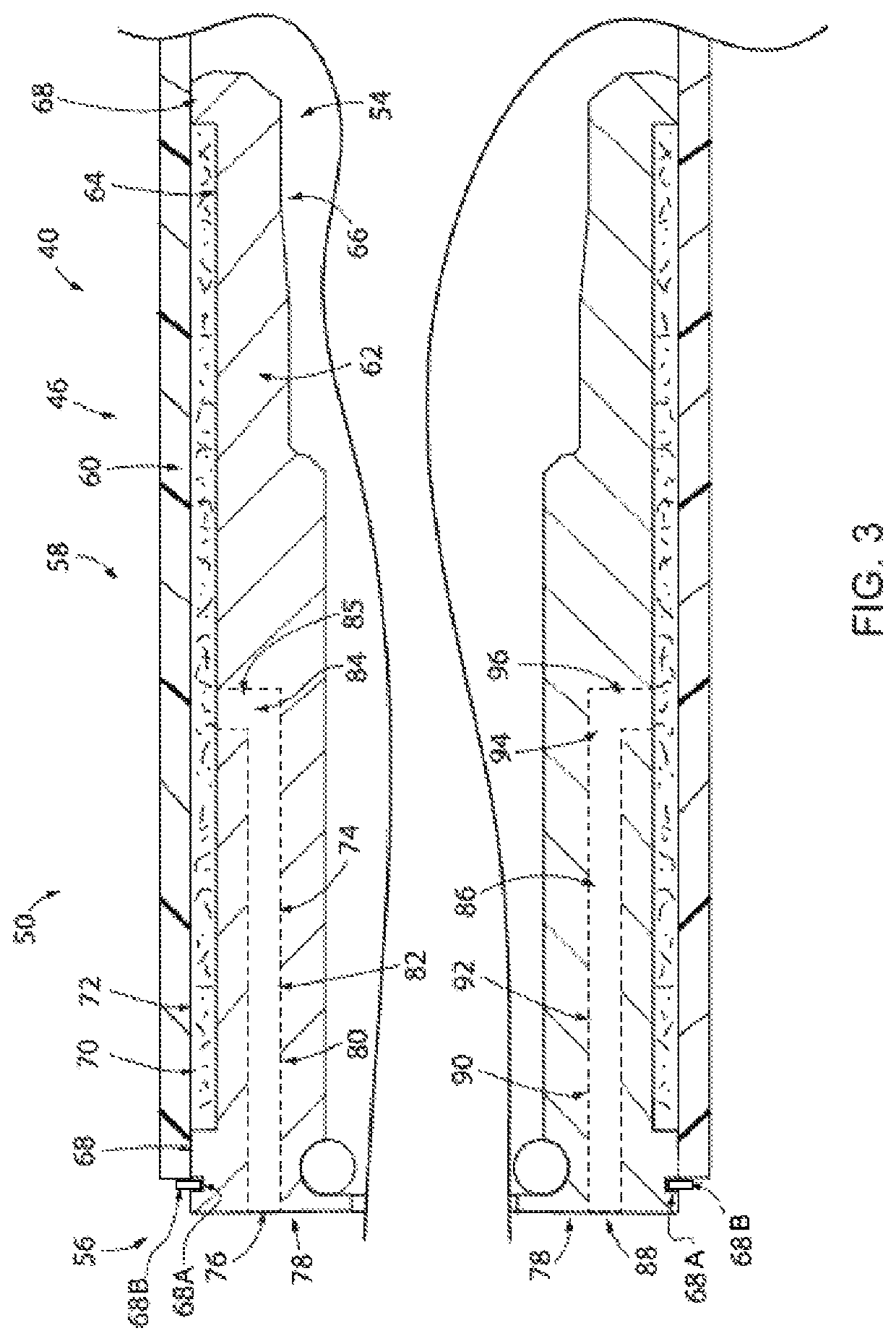Composite vehicle driveshaft with crash collapse system
a technology of drive shaft and composite vehicle, which is applied in the direction of shaft and bearings, mechanical equipment, couplings, etc., can solve the problem of increasing the risk of part wear at the interface(s)
- Summary
- Abstract
- Description
- Claims
- Application Information
AI Technical Summary
Benefits of technology
Problems solved by technology
Method used
Image
Examples
Embodiment Construction
[0022]Referring now to the drawings and initially to FIG. 1, a composite vehicle driveshaft 10 with a crash collapse system 12 is shown implemented in a vehicle 14, represented here as an automobile 16. Automobile 16 has front and rear ends 18, 20 and a powertrain that includes a prime mover such as engine 22. Transmission 24 receives power from the engine 22 and delivers it downstream through the composite vehicle driveshaft 10 to a differential 26 that delivers the power through a drive axle 28 to a pair of drive wheels 30. A pair of CV (constant velocity) joints 32 is shown respectively connecting the driveshaft front end 34 to the transmission 24 and the driveshaft rear end 36 to the differential 26. It is understood that instead of the transmission 24 and differential 28, the composite vehicle driveshaft 10 may instead transmit power from the engine 22 to a transaxle that combines a transmission and drive axle. Regardless of the particular configuration of automobile 16, the cr...
PUM
 Login to View More
Login to View More Abstract
Description
Claims
Application Information
 Login to View More
Login to View More - R&D Engineer
- R&D Manager
- IP Professional
- Industry Leading Data Capabilities
- Powerful AI technology
- Patent DNA Extraction
Browse by: Latest US Patents, China's latest patents, Technical Efficacy Thesaurus, Application Domain, Technology Topic, Popular Technical Reports.
© 2024 PatSnap. All rights reserved.Legal|Privacy policy|Modern Slavery Act Transparency Statement|Sitemap|About US| Contact US: help@patsnap.com










